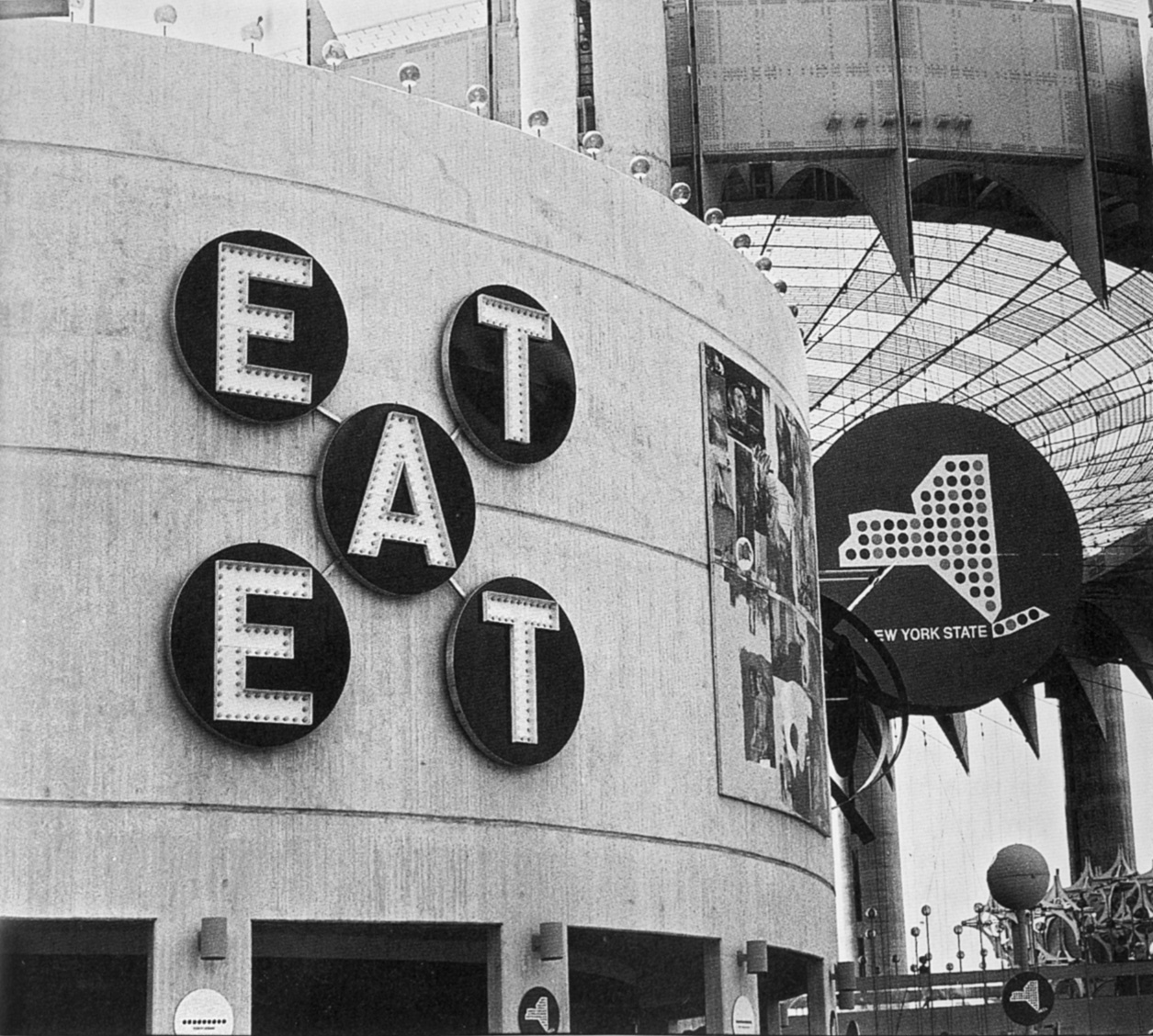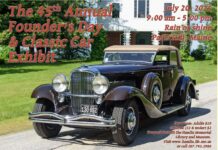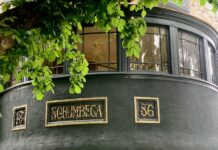Not a sequel to the popular book, but Robert Indiana’s iconic sculpture at Rockland’s The Farnsworth Museum.
EAT stands stands twenty feet high and contains close to 400 flashing LED lights, will be installed on the roof of the museum, over the Museum Store, near the corner of Main and Elm Streets.
 The EAT sculpture was commissioned in 1964 by the renowned American architect Philip Johnson for the exterior of the New York State Pavilion at the 1964 World’s Fair in Flushing, New York. Indiana’s work is a twenty by twenty-foot electrified metal sculpture comprising five six-foot diameter disks spelling out the word EAT. The piece was an instant hit in a most unexpected way. The presence of Indiana’s EAT sculpture at the NY State Pavilion induced long lines of fair-goers to line up outside the building, thinking, wrongly, that there was a restaurant inside. The confusion led the fair administrators to turn off the lights just a few days after the piece was installed. It has not been exhibited in public since.
The EAT sculpture was commissioned in 1964 by the renowned American architect Philip Johnson for the exterior of the New York State Pavilion at the 1964 World’s Fair in Flushing, New York. Indiana’s work is a twenty by twenty-foot electrified metal sculpture comprising five six-foot diameter disks spelling out the word EAT. The piece was an instant hit in a most unexpected way. The presence of Indiana’s EAT sculpture at the NY State Pavilion induced long lines of fair-goers to line up outside the building, thinking, wrongly, that there was a restaurant inside. The confusion led the fair administrators to turn off the lights just a few days after the piece was installed. It has not been exhibited in public since.
Indiana’s choice of the word “eat” as the subject for his sculpture had special meaning for him. In 1949, while serving in the Army Air Corps and stationed in Anchorage, Alaska, he was called back to Columbus, Indiana to attend to his gravely ill mother. When he arrived, he was shocked by his mother’s wasted appearance. Upon seeing her son, she awoke from her weakened state and asked if he had anything to eat and then died.
Like many other images in Indiana’s work, the subject of EAT is both deeply personal and profoundly universal. He has often said that his art is primarily autobiographical. In the early 1960s, the EAT became the subject of one of his small, totem-like wooden sculptures, paintings, and, eventually, his commission for the 1964 World’s Fair. That same year Indiana also collaborated with Andy Warhol on the film EAT, a twenty-odd minute portrait of Indiana eating a mushroom, slowed down by Warhol to run forty-plus minutes, shot in Indiana’s third-floor studio at 25 Coentjes Slip in lower Manhattan.
EAT isplaced diagonally on the roof over the Museum Store at the corner of Main and Elm Streets, thus emulating the placement it originally had at the New York World’s Fair. Its lighted letters, pulsating on and off in a manner reminiscent of movie marquees, give the sculpture and its meaning added impact. The sculpture’s original control system, made by Time-O-Matic in Danville, Illinois, is in pristine condition, and its wiring has been updated. EAT’s original incandescent bulbs have been replaced by vastly more energy-efficient and more durable LED bulbs. Once EAT has been installed and attached to its steel structure, it will be able to safely and securely withstand 100-mile-an-hour winds.













